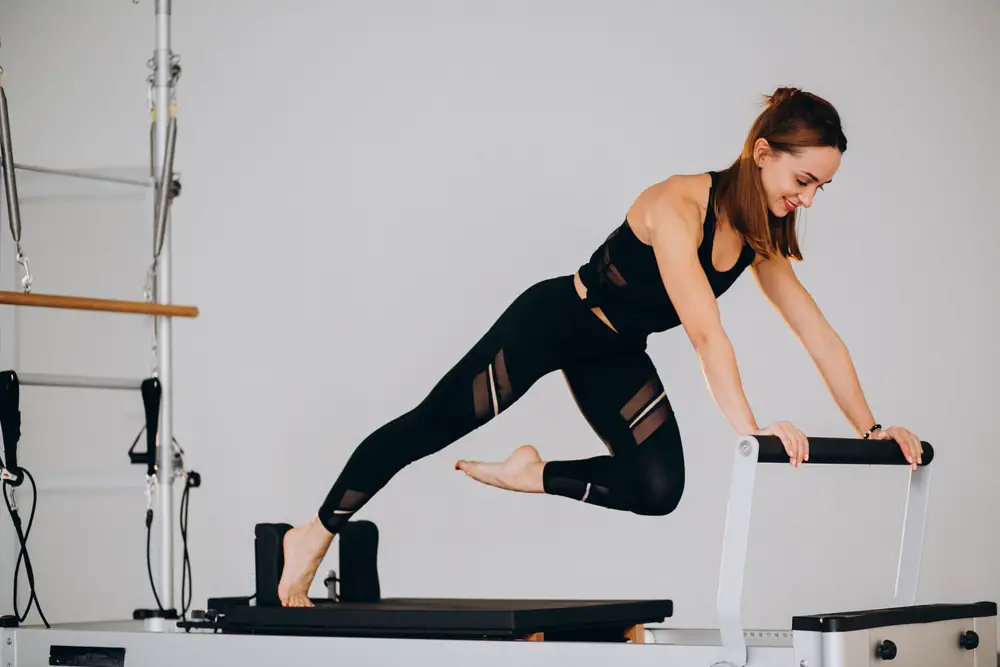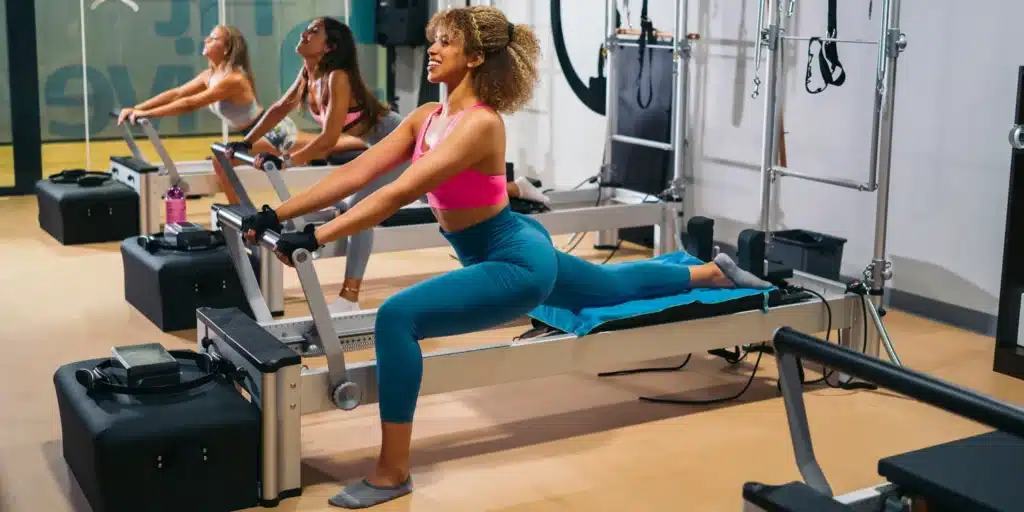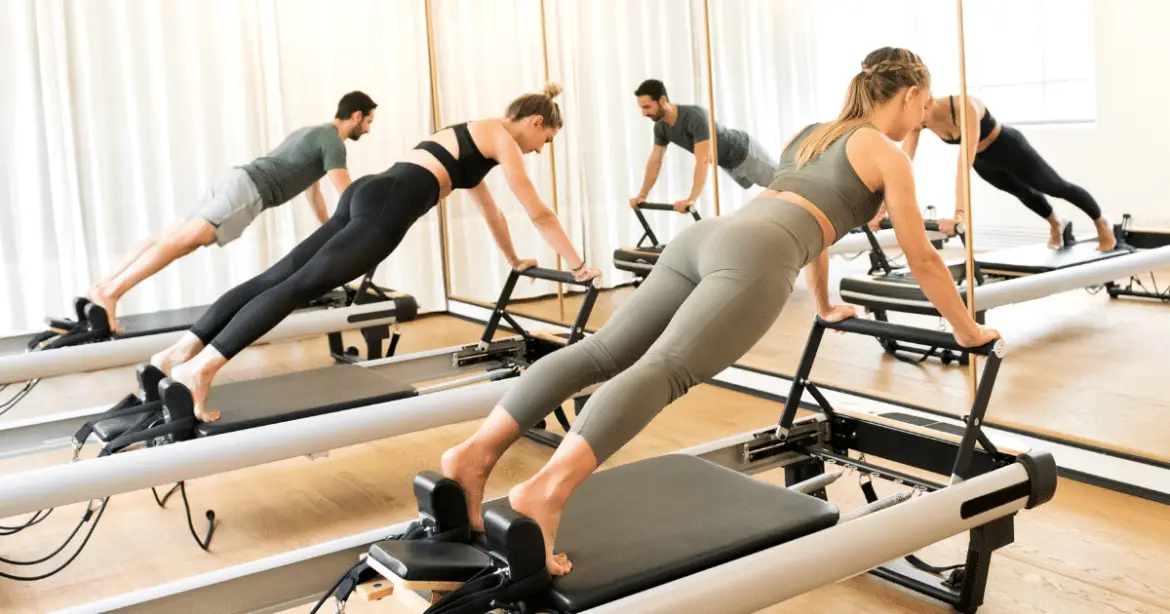Introduction
How Many Pilates Sessions To See Results: Understanding that Pilates is not a quick-fix solution is crucial. It’s a holistic approach to fitness that focuses on core strength, flexibility, posture, and body awareness. The transformative effects of Pilates often unfold gradually, making it more of a journey than a destination. However, most individuals typically begin to notice subtle changes after just a few sessions, which can be incredibly motivating.
One key factor in determining the pace of results is consistency. Regular practice is paramount. Those who attend Pilates sessions sporadically may take longer to see noticeable changes compared to individuals who commit to a consistent routine. Consistency not only helps build muscle memory but also reinforces proper form and technique, which are essential for maximizing the benefits of Pilates.
The expertise of the instructor also plays a pivotal role in achieving results. An experienced Pilates instructor can tailor sessions to an individual’s specific needs and goals, accelerating progress. They can provide personalized guidance and corrections that expedite the development of strength, flexibility, and body awareness. To recognize that everyone’s body is unique. Factors such as age, fitness level, and pre-existing conditions can influence the rate at which results become apparent. While some may experience rapid improvements in core strength and flexibility, others may require more time and patience.

How long will it take to see results from Pilates?
In summary, you can expect to see results from your Pilates practice within a few weeks to a few months, depending on various factors. Remember that consistency, quality instruction, and patience are essential components of your Pilates journey.
The Beginning Stages (0-4 Weeks)
During the initial weeks of practicing Pilates, you may start to notice some subtle changes in your body. These changes can include improved posture, enhanced muscle awareness, and increased flexibility. Many beginners also experience reduced stress and improved mental clarity as Pilates promotes mindful movement and relaxation. However, these early changes are often more psychological and subtle in nature.
Strength and Endurance (4-8 Weeks)
Around the one-month mark, you may begin to feel increased strength and endurance. Pilates exercises engage various muscle groups, and as you continue to practice regularly, you will build both core and peripheral muscle strength. You might find everyday activities, such as carrying groceries or sitting for extended periods, become easier due to your improved muscular support.
Flexibility and Mobility (8-12 Weeks)
Pilates places a significant emphasis on flexibility and mobility. By the end of the second month, you may start to notice improvements in your range of motion and flexibility. Tight muscles gradually become more supple, and joint mobility increases. Enhanced flexibility can lead to better posture and reduced risk of injury.
How many times a week should I do Pilates to see results?
Pilates Workout Schedule
Or, if you’re looking to tone your muscles and build strength, 3-4 times per week is a good place to start. In summary, of course, the more you work out, the faster you’ll see results.
Beginner’s Start: 2-3 Times a Week
If you’re new to Pilates, starting with 2-3 sessions per week is a good foundation. This frequency allows you to become familiar with the exercises, work on proper form, and begin building core strength and muscle memory. Consistency is key during the initial stages to establish a strong Pilates practice.
Intermediate Progress: 3-4 Times a Week
Once you’ve gained some experience and confidence, consider increasing your weekly Pilates sessions to 3-4 times. At this point, you’ll likely start noticing improvements in your strength, flexibility, and posture. This increased frequency provides more opportunities to challenge yourself with a variety of exercises and progressions.
Advanced Practitioners: 5+ Times a Week
Advanced Pilates enthusiasts, including athletes and those with specific fitness goals, may choose to practice Pilates 5 or more times a week. At this level, Pilates can become a primary form of exercise, offering comprehensive full-body conditioning. This frequency allows for regular progression and maintenance of peak physical condition.
How many times a month should I do Pilates to see results?
When creating your ideal Pilates workout schedule, devise one that works with your lifestyle and helps you meet your specific fitness goals. While three or four workouts per week may be ideal, two or even once-weekly sessions can still offer health benefits.
Maintenance and Stress Reduction: 1-2 Times a Month
If your primary goal for practicing Pilates is to maintain general fitness, improve posture, or reduce stress, a frequency of 1-2 sessions per month may be sufficient. Occasional Pilates classes can help you stay connected with your body, relieve tension, and prevent muscle imbalances. This minimal commitment can be a valuable to a well-rounded fitness routine.
Maintaining Flexibility and Mobility: 2-4 Times a Month
For individuals looking to enhance their flexibility and joint mobility, participating in Pilates sessions 2-4 times a month is a good starting point. This frequency allows for consistent work on stretching and lengthening muscles, making it easier to maintain flexibility and reduce the risk of injury.
Building Strength and Toning: 4-8 Times a Month
If your primary goal is to build core strength, tone your muscles, and improve body composition, consider practicing Pilates 4-8 times a month. This frequency provides regular opportunities to engage your muscles and work on building strength over time. Combining Pilates with other forms of exercise like cardio or weight training can be an effective strategy for achieving a lean and toned physique.
Specific Goals and Advanced Practitioners: 8+ Times a Month
Advanced Pilates practitioners, athletes, or individuals with specific fitness goals may choose to participate in Pilates sessions 8 or more times a month. Such high-frequency Pilates practice is suitable for those aiming for significant physical improvements or rehabilitation. It allows for regular progression and a deeper understanding of Pilates principles.
How many classes of Pilates until I see results?
To quote Joseph Pilates: “In 10 sessions you will feel better, in 20 you will look better, and in 30 you will have a whole new body.” If you are doing 2-3 classes a week, you should start to see results in 10-12 weeks. If you attend one class a week, you will still see results but it might take longer.
Starting Point Matters
Your starting point plays a crucial role in determining how quickly you’ll see results from Pilates. If you’re already physically active, have a background in fitness, or possess a good level of core strength and flexibility, you may notice results more quickly. On the other hand, if you’re a beginner or have underlying mobility issues, it may take a bit longer to see significant changes.
Frequency and Consistency
The frequency of your Pilates classes is a key factor. Consistency is essential for progress. Attending Pilates classes regularly, typically 2-3 times a week, can yield noticeable improvements sooner than sporadic attendance. The more consistent you are, the faster you’re likely to see results.
Quality of Instruction
The quality of instruction also matters. Attending classes led by a certified and experienced Pilates instructor can expedite your progress. A knowledgeable instructor can provide personalized guidance, correct your form, and offer modifications to suit your abilities and goals.
Goals and Expectations
The specific results you’re aiming for will impact the timeline for seeing them. If your goal is to reduce stress, improve posture, or maintain overall well-being, you may experience these benefits within the first few sessions. However, if you’re looking to build significant core strength, increase flexibility, or achieve specific body toning, it may take several weeks or months of consistent practice.
Can Pilates change your body in 2 weeks?
In general, it is unrealistic to expect significant changes in your body in just two weeks of Pilates. However, with consistent practice, Pilates can provide long-term benefits such as improved core strength, flexibility, balance, and reduced risk of injury.
Initial Changes: The First Two Weeks
In the initial two weeks of regular Pilates practice, you may experience some noticeable changes. These may include improved body awareness, increased mobility, and a reduction in muscle tension. Pilates emphasizes mindful movement, proper alignment, and controlled breathing, which can contribute to immediate feelings of well-being and relaxation.
Strength and Endurance: Building a Foundation
Two weeks is typically not sufficient time for dramatic changes in muscle strength and endurance. However, during this period, you’ll begin to lay the foundation for future improvements. You might feel that certain exercises become more manageable, and you’ll likely notice increased stamina as your body adapts to the demands of Pilates.
Flexibility and Posture: Early Gains
Pilates can lead to early gains in flexibility and posture. Regular stretching and lengthening exercises help release muscle tension, allowing for improved range of motion. You may find that your posture begins to feel more natural and upright as you become more aware of your body’s alignment.
Why am I not seeing results from Pilates?
One of the main reasons you may not be feeling or seeing the results of your Pilates workouts is your consistency, or lack thereof. While you may be getting some benefits from yo-yoing from 5 classes one week, to a two week break, you’ll find far greater results from building a solid foundation from the get go.
Inconsistent Practice
Consistency is one of the keys to success in any fitness program, including Pilates. If you’re not practicing regularly, it can be challenging to see significant results. Try to establish a consistent routine by scheduling regular Pilates sessions and sticking to them.
Lack of Intensity
Pilates exercises can be adapted to different levels of intensity. If you’re not challenging yourself enough during your sessions, you may not see the desired results. Work with your instructor to modify exercises, increase resistance, or add more advanced variations to intensify your workouts.
Improper Form
Correct form and alignment are crucial in Pilates. If you’re not performing exercises with proper technique, you may not be effectively engaging the targeted muscles. Consider working with a qualified Pilates instructor who can provide feedback and corrections to ensure you’re performing exercises correctly.
Unrealistic Expectations
To have realistic expectations about the pace of progress and the type of results you can achieve through Pilates. While Pilates offers numerous benefits, including improved posture, core strength, and flexibility, it may take time to see significant changes in body composition or muscle definition.
How long should I do Pilates to lose weight?
If you want to lose weight, it’s recommended to do around 150 mins of moderate exercise per week which equates to an average of five 30-minute pilates classes per week.
Pilates and Weight Loss: The Connection
Pilates primarily focuses on toning muscles, improving flexibility, and enhancing body awareness. While it can contribute to calorie burning and muscle development, it may not provide the same level of calorie expenditure as high-intensity cardio workouts like running or cycling. Weight loss primarily depends on creating a calorie deficit, where you burn more calories than you consume.
Frequency and Consistency: The Key to Results
If you aim to use Pilates as a tool for weight loss, the frequency and consistency of your practice become essential. Most experts recommend engaging in Pilates sessions at least 3-4 times a week for effective results. Consistency helps maintain your metabolism and keeps your body engaged in calorie-burning activities.
Duration of Pilates Sessions
The duration of your Pilates sessions can also influence your ability to lose weight. While a 30-minute session can offer benefits, longer sessions, typically around 60 minutes, can provide a more comprehensive workout that allows you to burn more calories and engage in a variety of exercises.
Combining Pilates with Cardio
For effective weight loss, it’s often advisable to complement your Pilates practice with cardio exercises. Cardio workouts, such as brisk walking, jogging, swimming, or cycling, can help create a greater calorie deficit and accelerate weight loss. Combining Pilates with cardio can offer a well-rounded fitness routine.
What happens when you do Pilates for a month?
And, once you’ve wrapped your head around the difference between Pilates vs yoga, you’ll know that Pilates can be a real all-rounder when it comes to core strength and general wellbeing, too. Studies have found it not only improves flexibility, but can build your abdominal, back, hip, and glute muscles, too.
Better Body Awareness
Pilates encourages a deep connection between the mind and body. Over the course of a month, you’ll develop a heightened sense of body awareness. This awareness can lead to more precise movements, improved coordination, and better control of your body’s movements.
Stress Reduction
Pilates incorporates mindful breathing and relaxation techniques, which can help reduce stress and promote a sense of calm. After a month of regular practice, you may find that you’re better equipped to manage stress and experience an improved sense of mental well-being.
Increased Energy Levels
Regular physical activity, such as Pilates, can boost energy levels. After a month, you may notice that you have more energy throughout the day and that you feel more alert and focused.
Toning and Body Composition
While significant changes in body composition typically take longer to achieve, after a month of Pilates, you may notice subtle toning and definition in your muscles. Your body may feel leaner and more sculpted, especially if you combine Pilates with a balanced diet.
Consistency Is Key
To note that the extent of your progress in one month depends on several factors, including your starting point, the frequency of your Pilates sessions, and your individual goals. To maximize your results, it’s essential to maintain consistency in your practice and continue challenging yourself with progressively more advanced exercises.

Conclusion
Consistency stands as a cornerstone of progress in Pilates. Those who commit to regular sessions, maintaining a steadfast practice schedule, are likely to witness the fruits of their labor more swiftly. The benefits of Pilates often compound over time, as muscle memory solidifies and proficiency in the exercises improves. This reinforces the notion that results are a cumulative reward for dedication. The role of the instructor in the Pilates journey cannot be understated. They can assess individual needs, fine-tune workouts accordingly, and offer guidance that expedites progress.
Thus, the choice of instructor can significantly impact the pace of improvement. Factors such as age, prior fitness levels, and specific goals contribute to the variability in how quickly results become apparent. Some individuals may experience rapid gains in strength and flexibility, while others may require more time and patience. It’s essential to set realistic expectations and embrace the journey rather than solely fixating on the destination.
Pilates is not a quick fix but a journey that rewards commitment, consistency, and patience. Subtle changes often emerge within a few sessions, offering early encouragement. However, substantial and lasting results typically come to those who persist in their practice, guided by experienced instructors who tailor workouts to individual needs. In the end, the journey itself becomes an integral part of the transformative experience, as it fosters a deeper connection with one’s body and a greater appreciation for the multifaceted benefits of Pilates.

